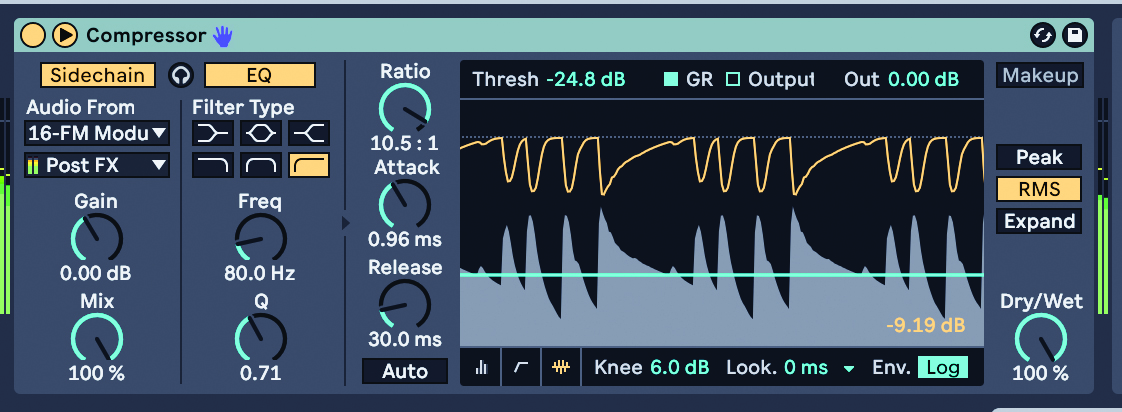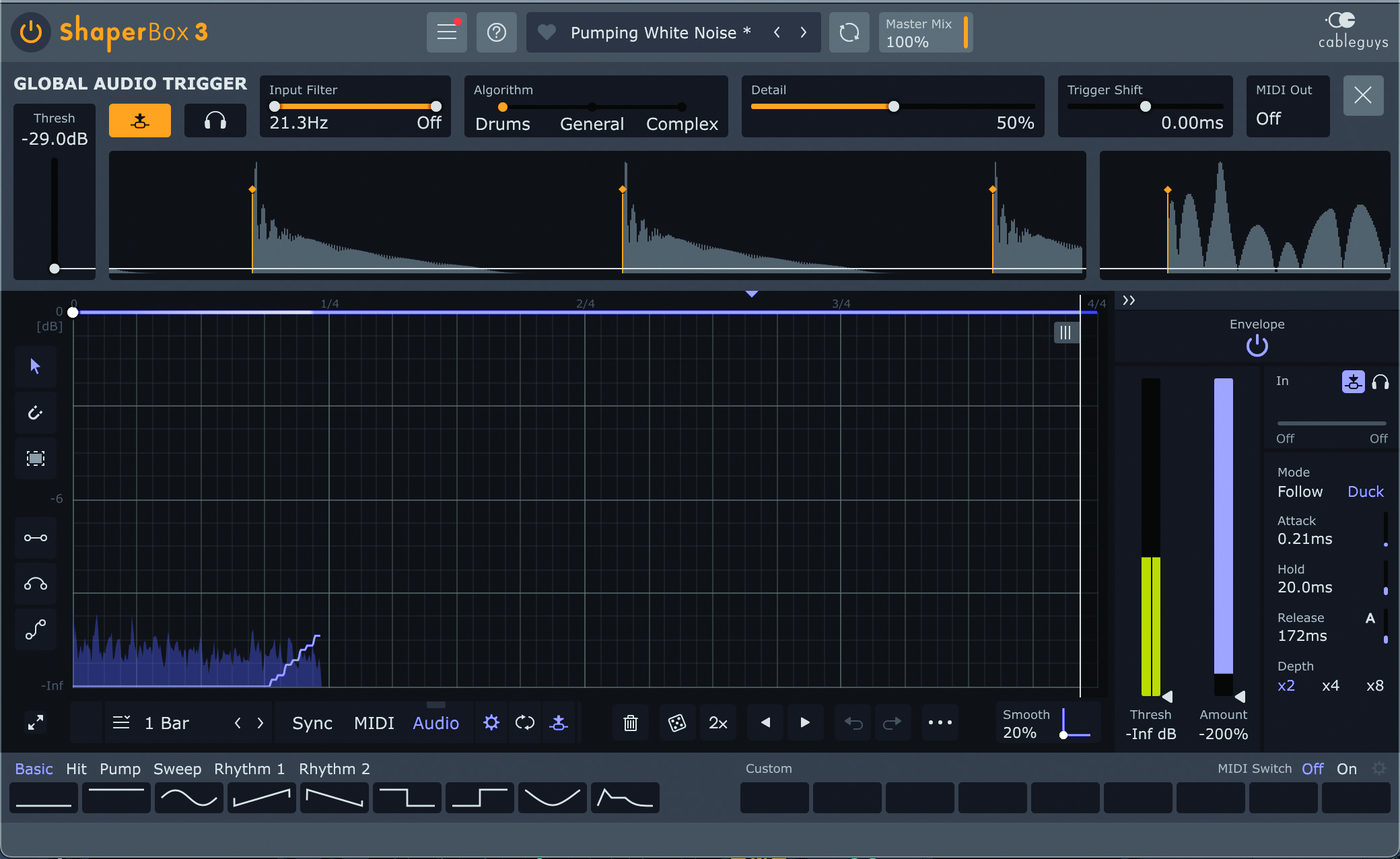Sidechaining, explained: "Even if you’ve not used it directly in your music-making, you’ll probably have come across it both in the studio and in your daily life"
Get to grips with the infamous, endlessly useful and often misunderstood world of sidechaining

Audio equipment such as gates and compressors will typically feature two signal paths: one being the signal that’s being processed, and the other the signal that actually controls the behaviour.
The control signal is usually generated by monitoring the device’s input level and is known as a sidechain – however, a lot of processors also offer the option of feeding in an external signal to control the processor’s behaviour.
It isn’t a new technique by any means but when someone mentions the term sidechaining, most producers will immediately think of the ‘ducking’ effect that’s been a staple of house production since before Daft Punk bought their first Alesis 3630.
Pretty much every modern DAW has a form of sidechain functionality
Pretty much every modern DAW has a form of sidechain functionality, and countless plugin effects and instruments use this to allow for a secondary input to trigger some element of its internal functions. Both external and internal sidechain routing is something that’s been used for many years. Even if you’ve not used it directly in your music making endeavours, you’ll still probably have come across it, both in the studio and in daily life.
Sidechain routing is frequently used in broadcast audio and video editing, for example using sidechain compression in order to automatically reduce the level of background music or noise during spoken dialogue, increasing the clarity of the dialogue without completely muting the background or requiring someone to sit there and manually ride the relative volume levels.

Sidechains in music
Of course, we’re more interested in the musical applications of sidechain routing – of which there are many. The most well-known is sidechain compression, mentioned above, which uses an external trigger input – often, but not exclusively a kick drum – to lower the volume of another audio signal. This can create the distinctive pumping effect familiar in house and pop music, but it’s also handy for keeping potentially clashing elements out of the way of one another, typically a kick and bass.
It shouldn’t be assumed that a ‘sidechain’ can only be used to create one form of effect
Another example is a classic broadband de-esser; this is essentially a frequency-focused use of compression. By filtering a compressor’s internal control signal so that the sibilant frequencies between 2-8 kHz are most prominent, we can then make the compressor attenuate the signal’s level only when sibilance is detected. This is a great technique for when you’ve not got a de-esser but care must be taken over the threshold, attack and release times used as broadband de-essing will reduce level over the entire frequency range, not just sibilant parts.
Want all the hottest music and gear news, reviews, deals, features and more, direct to your inbox? Sign up here.
Sidechain filtering is also often built into gates. By carefully adjusting the high and low-pass filters applied to a gate’s control signal, it’s possible to substantially alter the gate’s behaviour without colouring the signal being processed. One example of this is gating spot mics when recording a drum kit.
By applying a high-pass filter to the gate on a snare mic we can prevent the gate being accidentally opened by spill from the kick drum or floor tom. And by using a low-pass filter, we can prevent spill from the hi-hat or cymbals opening the gate. This makes it easier to get a consistent sound when mixing the individual mics together later on, with no unwanted artefacts.

Away from the well-known uses of sidechain routing, other sidechain enabled processors have emerged in recent years that use sidechain routing to offer new and interesting features. One example is FabFilter Pro Q 3’s EQ Match feature. This allows us to match the tonal characteristics of the signal being processed with an external signal – ideal for making separate recordings of the same source match up EQ-wise or if you’ve had to swap mics during a long tracking session.
When a sidechain isn’t a sidechain
Confusingly, among some electronic producers, the phrase ‘sidechain’ has become synonymous with the pumping or ducking effect produced by overt sidechain compression, rather than the process involved to create it. As a result, it’s not uncommon to hear EDM artists talk about ‘sidechaining’ their bass or a pad sound, when in fact they’re creating rhythmic ducking using some kind of sequenced gate or volume shaper.
While pointing this out might sound like pedantry – it’s hardly the worst crime against music making – it’s worth highlighting the difference, for the sake of accuracy, but also because it shouldn’t be assumed that a ‘sidechain’ can only be used to create one form of effect.
5 quick sidechain tips

1. Ghost signals
Use a silent ‘ghost’ trigger signal from your mix to trip compression over other sounds. There are a few advantages to this: you can sequence your ghost trigger into a more complex pattern, shift it in time, and save your setup within your mix template for instant recall.
2. Release
When you’re dialling in sidechain compression, the most important of the controls would be the compressor’s release time. Small millisecond shifts here can greatly alter the ‘groove’ of the effect, from earlier rising to a more lazy, sluggish ‘pump’.
3. Mix and blend
If your sidechain ducking is sounding too obvious, check if your chosen compressor features a wet/dry mix control – sidechain compression blended with the unpumped signal can be a great way to rein in the effect a little.
4. Gates
It’s easy to make an interesting gated synth or pad using a percussive part of your track to trigger a sidechain enabled gate plugin – with most synths’ in-built gate offerings sounding rigid, use a swung hi-hat or snare loop as a trigger to fit the gate effect with your track’s groove.
5. Vocal narration
To get vocal narration and background music to sit together, use the vocal track to trigger a sidechain compressor on the backing track. Using a medium attack and long release will keep the compression level consistent during the dialogue, avoiding unwanted pumping.


Future Music is the number one magazine for today's producers. Packed with technique and technology we'll help you make great new music. All-access artist interviews, in-depth gear reviews, essential production tutorials and much more. Every marvellous monthly edition features reliable reviews of the latest and greatest hardware and software technology and techniques, unparalleled advice, in-depth interviews, sensational free samples and so much more to improve the experience and outcome of your music-making.
